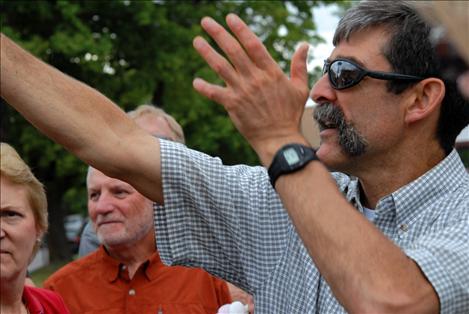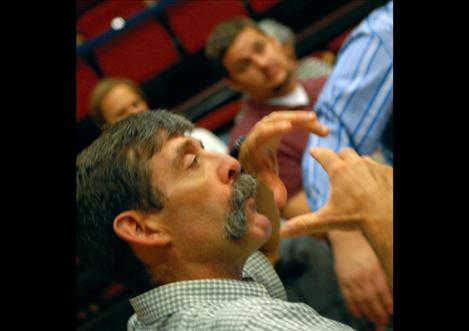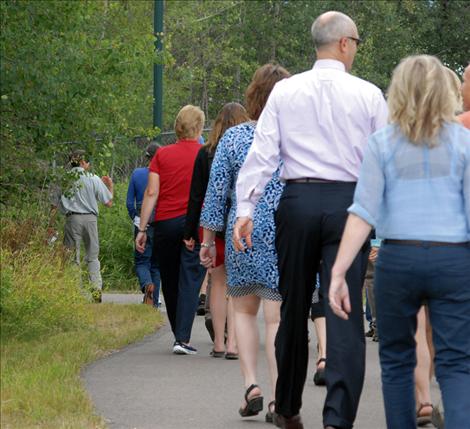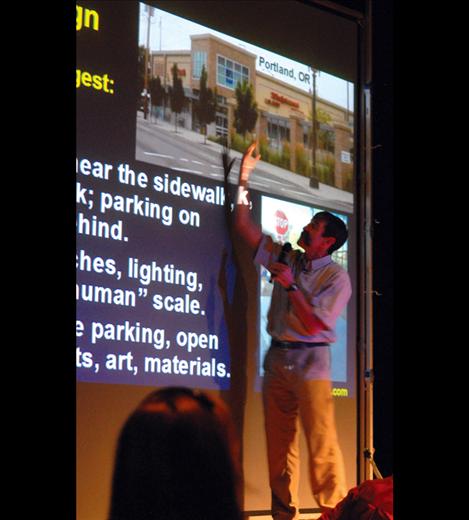Polson considers safe, accessible streets program
Hey savvy news reader! Thanks for choosing local.
You are now reading
1 of 3 free articles.
Mark Fenton started the Healthy Communities Workshop on July 22 asking the crowd of adults to close their eyes and think back to their childhood and the first memory of being active and playing.
With these memories fresh in participants’ minds, Fenton started the questions. Were all the children the same age or the same sex? Was there an adult present? Was there water or a wheeled vehicle involved? Were there uniforms? Were there rules?
Fenton, a national public health, planning and transportation consultant, used the term “free-range children” and described childhoods many Montanans enjoyed — riding bikes or horses to a friend’s house; getting the neighborhood kids together for a game of baseball or tag; roaming freely from house to house; exploring fields, woods and hills. Most kids walked or rode their bikes to schools, or at least to the school bus for rural kids.
Many children today are not free-range kids; they are driven to school, their time is scheduled, they play only organized sports and parents do this because they’re worried about safety, even though numbers of crimes against children have not risen, according to Fenton.
In 1969, Fenton said approximately 40 percent of kids rode their bikes to school, but by 2001 that number had dropped to less than 15 percent, and the number of students who were driven to school rose from 15 percent to nearly 50.
“Notably, this is precisely the period over which the United States saw a near tripling of childhood obesity rate,” Fenton said in an article for “Childhood Obesity” in February 2012.
But children are not the only people who should exercise every day. The Surgeon General’s Physical Activity Guide for 2008 advised 150 minutes a week of moderate physical activity for adults; more is better and the activity can be broken up. Children should be playing, running around, riding their bikes, etc., for 300 minutes per week.
Fenton believes in creating safe environments that support routine physical activity for children and adults.
He had already presented his ideas to a group of Polson businesspeople, Confederated Salish and Kootenai Tribal employees, City of Polson employees and one Polson City Commissioner at a Building Active Communities Initiative Workshop held in Bozeman in March. Five other smaller communities, Dillon, Hamilton, Belgrade, Whitefish and Anaconda attended with Polson.
The Whitefish meeting was icing on the cake.
The group did a walking audit around Whitefish, asked by Fenton to think about the route if it were being used by a 10-year old, a 76-year-old, a seeing impaired person or a wheelchair user.
Crumbling concrete, wide sidewalks, crosswalk markings, wheelchair access crossing streets, “rumble strips” at crosswalks for blind folks and narrow sidewalks were all discussed.
Four elements Fenton promotes and used in his presentation:
• A variety of uses within walking, biking and transit distance
• Connecting facilities, trails, sidewalks, bike lanes and transit
• Destinations that are functional and inviting for pedestrians, bicyclists and transit users
• Safe and accessible for ages, incomes and abilities
The Polson attendees, as well as the other towns, gathered at tables and were asked to come up ways to make their communities more physically friendly.
Polson’s program will be called Safe and Accessible Streets. Ideas generated included two-hour parking, experimenting with reverse parking, staff education, more crosswalks on Highway 93, a sidewalk audit and sidewalks all through Polson. Participants also were interested in attracting more tourists to Polson.



















